Concrete Stain vs. Paint: Which Is Best for This Porous Surface?
Coat characterless concrete to enhance its look and longevity


Translucent stain permeates porous concrete to produce a marbled, one-of-a-kind look.
Opaque paint provides a uniform finish and covers blemishes and surface stains.
Concrete stain is more durable than paint, which is prone to peeling.
Paint comes in many colors, while stain is limited to earthy tones.
Stain is more challenging to apply than paint.
Coating concrete can add depth to this drab surface. You have the option of paint or stain for your concrete surface, both of which have a solid case to make for its superiority. We compare concrete stain vs. paint to help you decide which is best to polish up your pool deck, paint your patio, freshen up your floors, or update your driveway.
What Are the Differences Between Concrete Stain and Paint?
Concrete stain and paint change the appearance of your surface considerably, but learning more about the pros and cons of each will help you decide which is best for your desired aesthetic and skill level if you choose to DIY.
| Type of Difference | Concrete Stain | Concrete Paint |
|---|---|---|
| Durability | Durable penetration | Less durable coating |
| Finish | Translucent | Opaque |
| Colors | Limited choice | Wide choice |
| Preparation | Medium prep | Significant prep |
| Application | Difficult to DIY | Easy to apply |
| Cost | Mid-range | Budget-friendly |
Concrete Stain vs. Paint: Appearance Differences
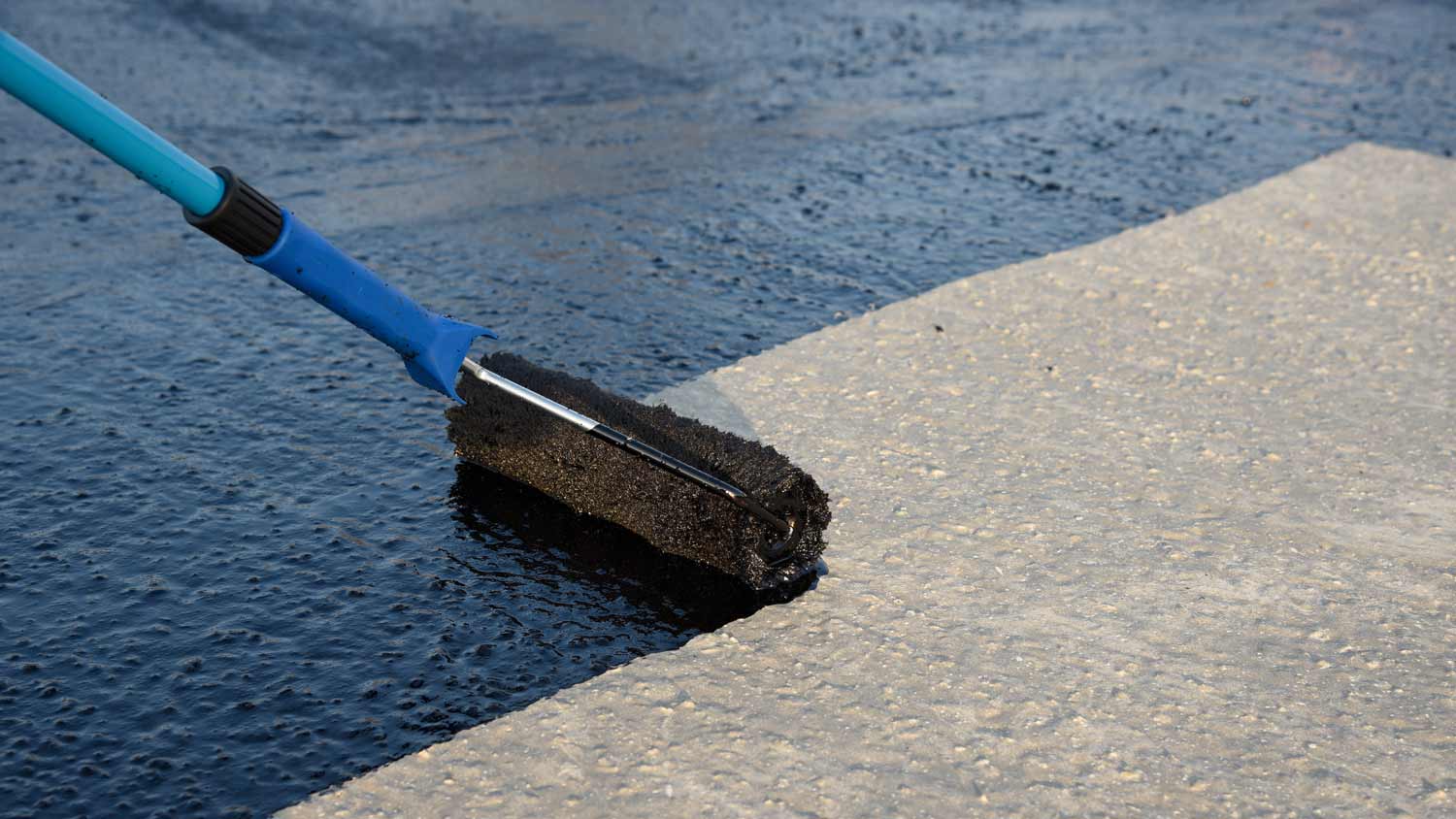
There are various factors to consider when comparing the appearance of concrete stain or paint.
Finish
Stains penetrate deep into porous concrete to provide a translucent or semi-translucent appearance that continues to show the surface textures while creating a one-of-a-kind finish. This ensures a long-lasting, natural look but also means that any blemishes or concrete discoloration will likely still show through. Reactive acid-based stains produce a traditional mottled appearance, and water-based stains produce a more consistent coloring, ideal for contemporary designs.
Concrete paint sits on top of the surface rather than penetrating it. This opaque, flat finish can cover stains, cracks, or blemishes and provides a uniform, consistent look, but the surface loses the natural texture and appearance of concrete. Plus, a painted concrete surface can be more slippery than stained concrete unless you buy an anti-skid formula.
It’s worth noting that paint won’t hide major damage to a concrete surface. Learn how to fix cracks or call a concrete contractor near you to make major repairs before applying any coating.
Color
A much wider range of concrete floor paint colors are available than concrete stains. If you are looking for a bright pastel or shade to match other elements in or around your home, paint may be the way to go.
Concrete stain often comes in natural, earthy shades like gray, brown, terra cotta, green and blue. These can help you achieve the look of stone, marble, or wood, but you are more restricted than you would be with paint color choices. However, some water-based stains are available in a wider color palette than traditional acid-based stains.
Uniformity
Controlling the final appearance of concrete stain is tricky and unpredictable. While you get a unique look with the marble effect of staining, paint wins every time if you crave consistency and a uniform appearance.
Concrete Stain vs. Paint: Durability Differences
Concrete stain is the way to go when looking for the longest-lasting option for an exterior project in a high-traffic area. Stains penetrate the concrete, so it won’t suffer from peeling and chipping the way concrete paint that sits on the surface can. If moisture gets trapped between the concrete and the paint in an outdoor environment, this can speed up the peeling and wearing process and even damage the concrete.
Acid-based stains absorb more deeply into the concrete, making them more even durable than water-based options.
Concrete Stain vs. Paint: Application Differences
Learning how to paint a concrete porch is a much easier DIY project than applying concrete stain to the same area. Paints are also easier to clean up and are less harmful to people and the environment.
Water-based stains are easier to apply than acid-based ones, which require you to wear protective gear and be mindful of ventilation. They also dry quicker and are safer to work with because they don’t contain toxic VOCs (volatile organic compounds).
If you are too heavy-handed when applying stains, you can end up with an overly dark or inconsistent finish. You need special spraying tools to apply as uniformly as possible. At the end of the process, you need to neutralize acid-based stains by rinsing them with soap and water, making it a messier and more time-consuming project. We recommend hiring an exterior painting contractor near you to carry out your concrete staining.
Concrete paint has low VOCs, and it is easy to get a uniform finish with simple tools such as paint brushes and rollers. There’s no rinsing required at the end, either. And, if you make a mistake with the paint color or technique, it’s easy to remedy with another coat. If you make a mistake with concrete stains, there’s no going back.
Whether you use concrete stain or paint, always properly prep the surface before applying the coating to ensure the best absorption or adhesion.
Concrete Stain vs. Paint: Cost Differences
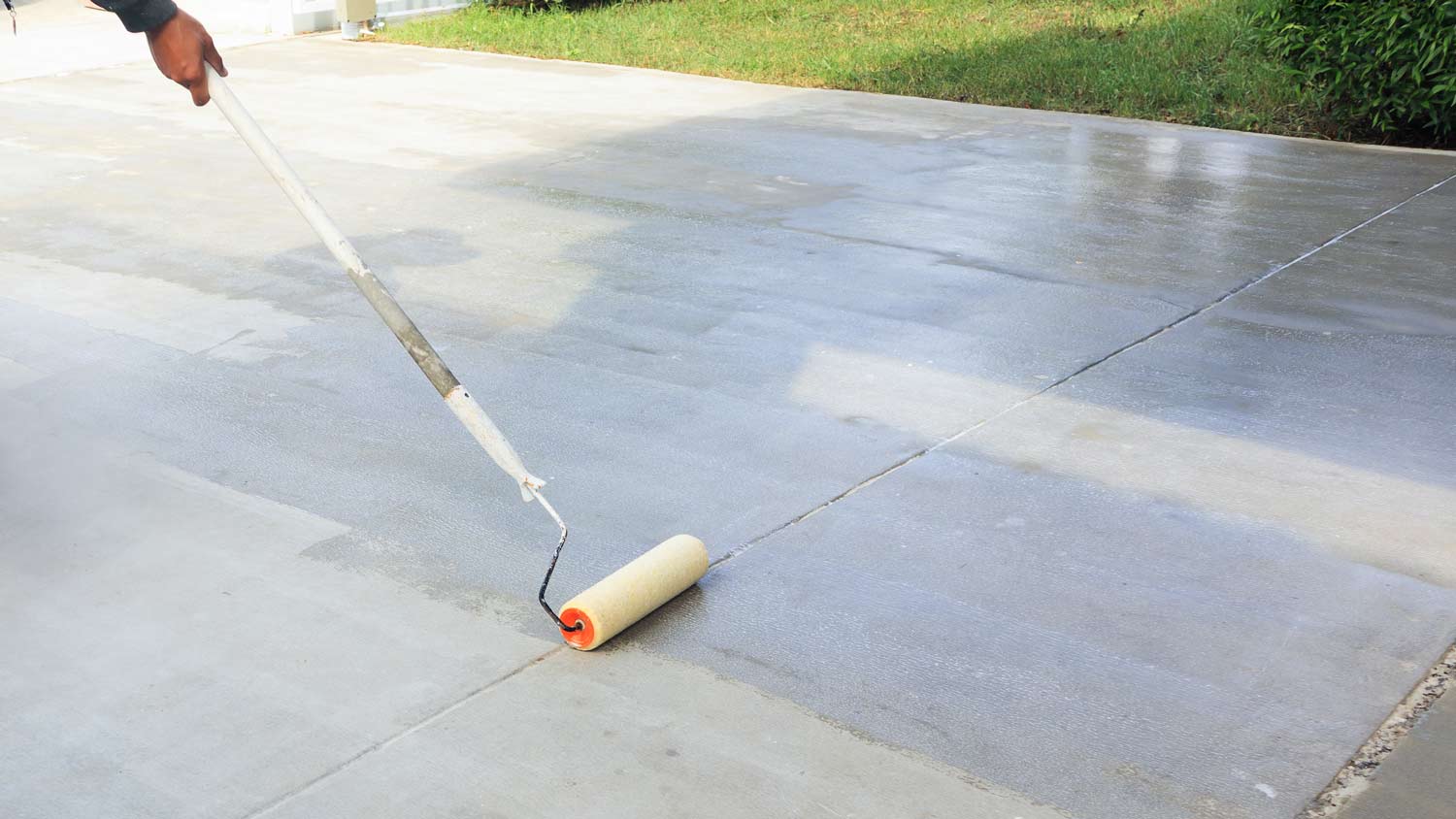
The cost to stain concrete floors is typically more than the cost to paint concrete surfaces. While basic water-based stain costs $2 per square foot, acid-based stains are more expensive and can go up to $25 per square foot for complex designs involving stenciling or hand-finishing. The average cost to paint a concrete floor is between $1.50 to $3 per square foot.
While concrete paint costs less to apply than concrete stain, it won’t last as long. Because you have to repaint sooner than restaining, overall staining can represent better value for money.
Frequently Asked Questions
Whether concrete stain is better than concrete paint depends on your desired aesthetic, DIY skills, and budget. Concrete stain is more durable than concrete paint and provides a unique, translucent, natural finish. Concrete paint comes in a wider range of colors, is easier and less costly to apply, and helps cover existing stains and blemishes.
Concrete stain provides a more long-lasting finish than concrete paint. When you properly prep and clean the concrete and get the application right, acid-based stains can look good for decades—depending on footfall and your local climate. Water-based stains don’t penetrate as deeply into the concrete, so they don’t last as long. You might need to add a fresh coat or two of concrete paint every few years in high-traffic areas.
Unlike paint, concrete stain won’t peel off. Instead, the color absorbs into the surface of this porous building material. While it doesn’t peel, the stain only penetrates the top layer of concrete, and as the top of the concrete eventually wears away, so will the stain. However, this process is much slower than paint peeling, especially on low-traffic surfaces.
Epoxy coatings for concrete basement or garage floors are popular. These two-part resinous coatings are waterproof and highly durable, making them an ideal choice for high-traffic spaces or areas where spills are likely. However, epoxy flooring costs more to apply than concrete stains and doesn't produce a natural-looking finish.
Always seal concrete stain to protect against wear and preserve the color. This applies to acid- and water-based stains but not always to concrete paint. Many paints designed for outdoor use contain ingredients designed to protect and waterproof without the need for additional sealant. Fortunately, learning how to seal concrete is something most DIY-savvy homeowners can tackle.
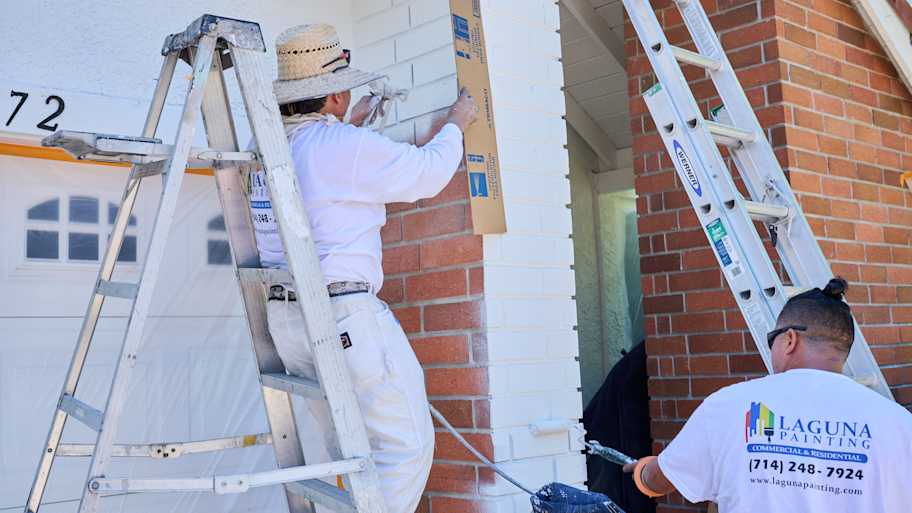

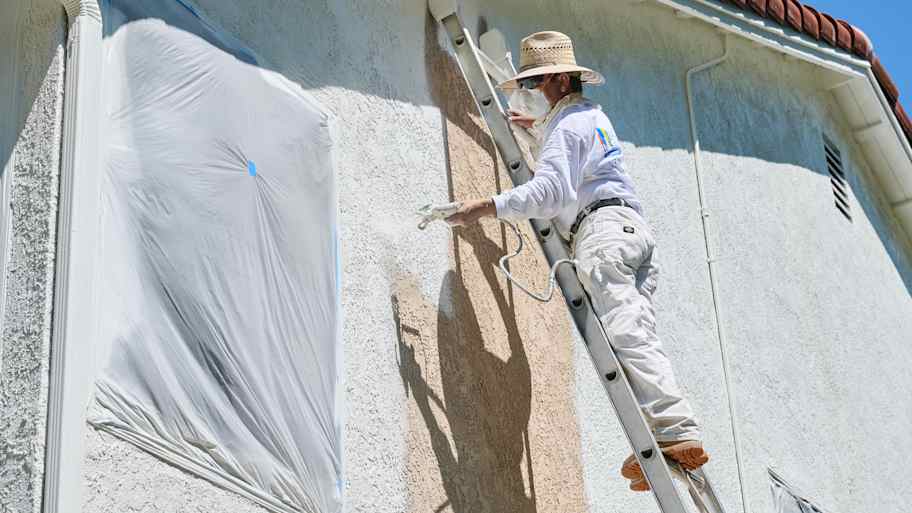

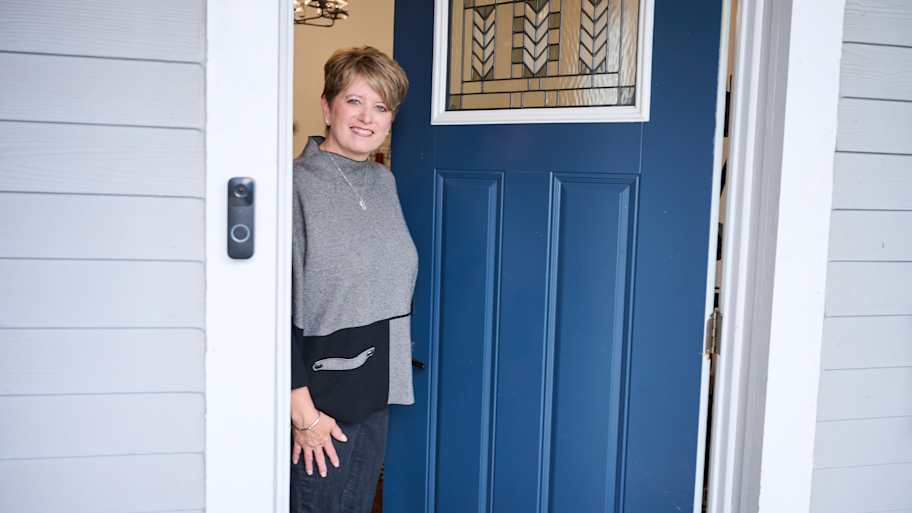
- How to Clean Concrete Indoors and Outdoors
- 9 Types of Concrete Finish for Driveways, Patios, and Walkways
- 9 Types of Concrete Floor Finishes to Suit Any Home
- 6 Concrete Maintenance Tips to Extend Its Longevity
- How to Remove Paint From Concrete With 5 Super Efficient Methods
- Can You Pour New Concrete Over Existing Concrete?
- How to Dispose of Concrete 5 Ways
- 9 Tips and Tricks for Beginners Working With Concrete
- Unlocking the Advantages of Concrete: Why It’s the Ultimate Building Material
- How to Break Up and Remove Concrete










